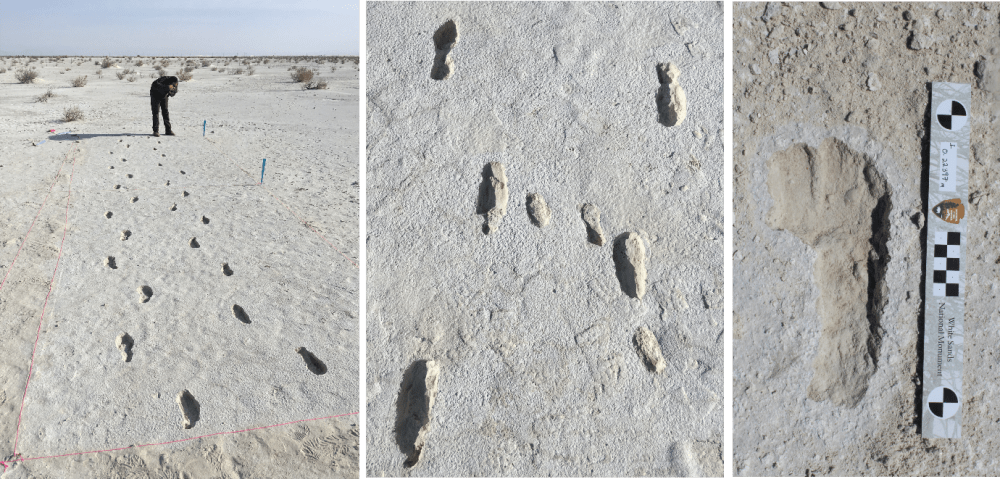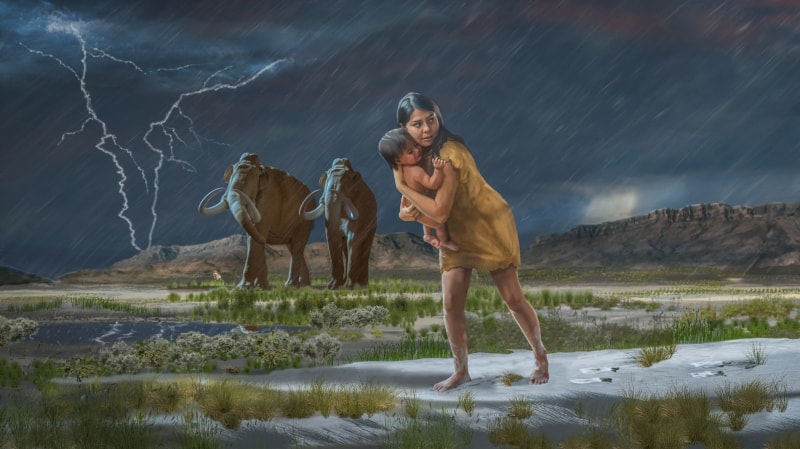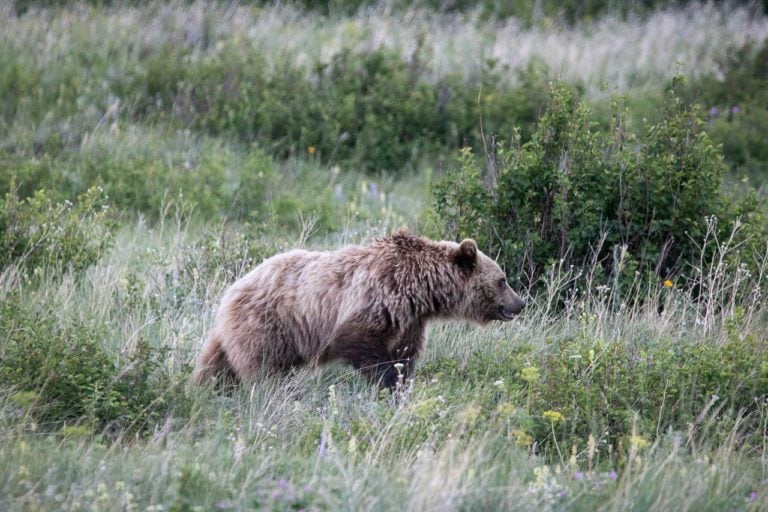NEWS: White Sands National Park Footprints Offer a Glimpse into the Perilous Life of a Prehistoric Mom and Child
At White Sands National Park, the longest fossilized human tracks in the world offer a glimpse into the danger-filled life of a prehistoric mom and her toddler.
White Sands National Park is famous for its beautiful gypsum sand dunes. What is less known, however, is that just below that bright white sand lies the world’s densest collection of fossilized tracks and footprints.
Now, a study published in the Quaternary Science Reviews describes the longest known late-Pleistocene human trackway in the world, which was discovered by a National Park Service employee and a team of scientists in 2017-2018.
Longest Fossilized Human Footprints in the World Discovered in White Sands National Park, New Mexico

Running almost perfectly straight for 1.5 kilometers (0.9 miles), the tracks were made by an adult women (or possibly an adolescent man) who was traveling with a child along the shore of ancient Lake Otero.
The child’s tracks intermittently appear next to the mother’s, also revealing that its age was no more than 3 years old. The irregularity of the child’s tracks, combined with the shape and pattern of the mom’s tracks, indicate that she was carrying it and occasionally put it down.
What’s even more intriguing about these newly discovered White Sands footprints is that there’s both a northbound and a southbound set of tracks. They were made by the same mother just a short period of time apart.
On the return trip, the child appears to be no longer with her. This can be concluded because there are no child’s tracks and the mom’s tracks are smaller and less variable in shape.

A World Filled With Giant Predators
Just think about how stressful it can be to take a tired toddler to the supermarket nowadays. You can only imagine the horrors this mom went through more than 10,000 years ago, walking hurriedly along a lake in a prehistoric wilderness.
This was, after all, an incredibly hostile landscape, home to terrifying predators like dire wolves, American lions and saber-toothed cats. Giant sloths, camels and woolly mammoths roamed these plains as well.
In fact, indicating how abundant megafauna was in prehistoric America, both a giant sloth and a woolly mammoth crossed the outbound tracks. This occurred in the couple of hours between the woman’s outbound and return journeys.
The giant sloth seems to have hesitated when approaching the human tracks, standing up on its hind legs (to smell the air, maybe). It moved around in a circle before leaving the area. This apparent nervousness of the giant sloth could be explained by previous research done in the White Sands area, which suggest that humans hunted giant sloths. The animal clearly wasn’t at ease and knew a human had passed by shortly before.
The mammoth also crossed the human tracks, but showed no sign of any hesitation. It didn’t stop or even slow down, which may indicate that it didn’t consider humans as a threat. Alternatively, it may simply not have noticed anything unusual.
Insight Into the Life and Challenges of Our Human Ancestors
The fascinating discovery of these White Sands footprints is important for more than one reason.
“This research is important in helping us understand our human ancestors, how they lived, their similarities, and differences. We can put ourselves in the shoes, or footprints, of this person, and imagine what it was like to carry a child from arm to arm as we walk across tough terrain surrounded by potentially dangerous animals.”
Co-author Sally Reynolds, senior lecturer in hominin paleoecology at Bournemouth
In addition to these record-breaking fossilized human tracks in White Sands National Park, there many other tracks.
There are footprints that show humans stalking a giant sloth. Another set of tracks shows children playing in puddles created by the footprints of large animals.
Learn More About the White Sands National Park Footprints
This study was done by researchers from Cornell University, Bournemouth University, the Royal Veterinary College, the Liverpool John Moores University and the National Park Service. It was published in the Quaternary Science Reviews.
You can find more information here:







